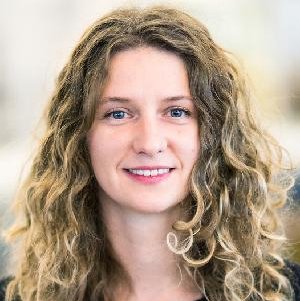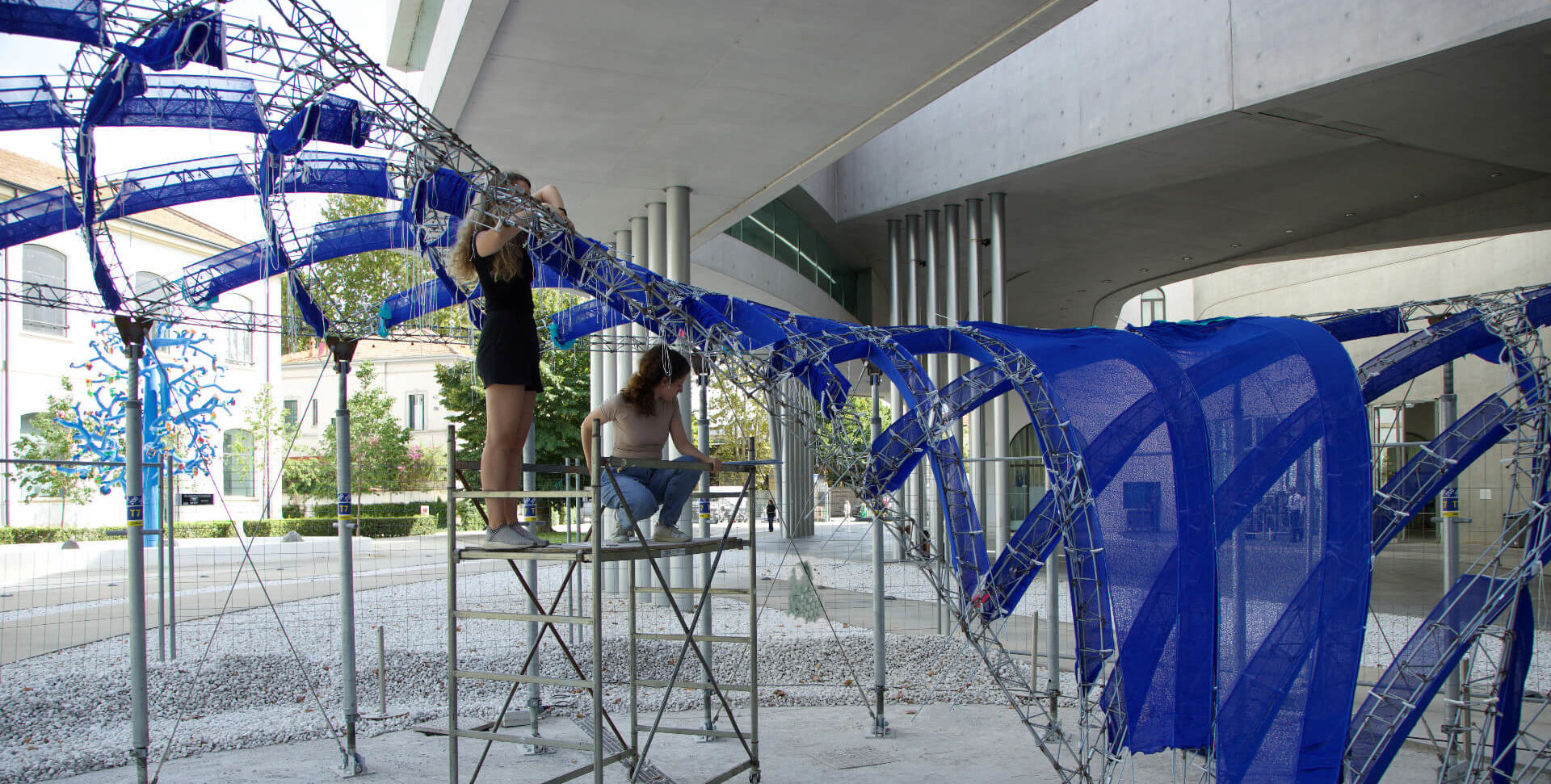In front of the prestigious MAXXI Museum in Rome rises an artful structure that attracts attention with its unusual shape and bright blue colour. It is a collaboration between the Block Research Group of ETH Zürich and TU Delft. The pavilion is shaped with a unique knitting work Mariana Popescu created using an algorithm and a knitting machine. With this, she demonstrates that it is possible to make efficient structures with very little building material, which also reduces CO2 emissions. Hardly any formwork is needed, resulting in virtually no construction waste.
The production of concrete releases CO2. If we manage to reduce the amount of concrete and cement we use in construction, we gain a lot in reducing CO2 emissions. However, it is a challenge to make a sturdy structure with less material. "We don't usually build in a material-efficient way. A structure with straight beams and right angles needs a lot of material to have enough bearing capacity," says Mariana Popescu, assistant professor at the faculty of Civil Engineering and Geoscience (CEG). "To make smarter use of material, we have to start working with curvature. But that is complicated. You need moulds and formwork to get the concrete in the right shape. Doubly-curved forms therefore generate a lot of construction waste."
Algorithm creates complex knitting patterns
The basis for the sustainable way of building is an algorithm Popescu developed to create complex knitting patterns. The knitting is constructed in such a way that it assumes the correct curved shapes when under tension. Putting it together by hand is hardly doable. Now, a commonly available industrial knitting machine in the cellar of the CEG building reads out the patterns created by the algorithm. Thanks to this solution, little or no formwork is needed. The formed knitting is the basis for applying a layer of concrete. A thin layer of concrete, because the doubly-curved shapes create the bearing capacity.
Scaffolding and reinforcement in one
What is unique about her latest structure is that the bending-active steel rebars have a double function. Firstly, they have the function of a scaffolding: they help tension the knitting, allowing it to take the right shape. Second, in the final structure, it functions as reinforcement for the concrete. "This is a very big win, virtually nothing goes into the bin. And it's a structure that is close to practice. It can have large spans using little material thanks to its efficient shape and reinforcement," Popescu says.
The 9-metre-wide pavilion that Popescu and her colleagues made at the MAXXI Museum in Rome. It consists of a steel structure encapsulated by a polyester 3D-knitted shuttering. Because of its temporary nature, the pavilion is not cast in concrete.
Precision work in large surface area
The pavilion at the entrance of the MAXXI Museum in Rome and is part of the exhibition Technoscape.The architecture of engineers. The surface area of 120 m2 is much larger than previous structures built using this technique. To achieve this, Popescu had to apply a lot of precision knitting. "If you look closely, some parts are a bit more transparent. The knitting pattern is very precisely designed to form a pavilion like this."
The design of the KnitNervi pavilion
The design is inspired by Pier Luigi Nervi's Palazzetto dello Sport. It is a thin roof or dome construction with a skeleton of steel. The steel wires were assembled on site. The knitting was made in Delft based on an algorithm. This knitted structure folds up very compactly and can therefore be easily transported. The mesh is stretched over the reinforcement and stretches itself into graceful and strong shapes. The structure is only supported with a few standard, reusable formwork posts that can be found everywhere in construction. What remains is the casting of concrete.
This is a project by The Block Research Group at ETH Zurich and Mariana Popescu of TU Delft's CEG faculty.
Images by Serban Bodea, Achilleas Xydis and Mariana Popescu




